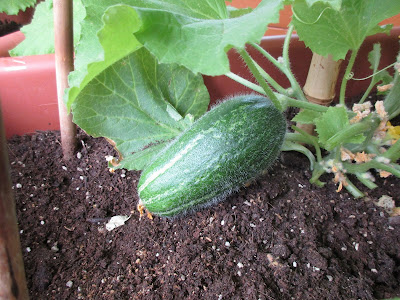Un altro varietà carosello che le ditte sementiere pugliesi non ritengono più opportuno commercializzare è il CAROSELLO TONDO BARESE. Francamente è inspiegabile. Sta di fatto che ero rimasto senza i semi di questa varietà. Fortunatamente, il mio amico americano
Jay Tracy, uno dei massimi esperti nella coltivazione dei caroselli, ha provveduto a mandarmi una discreta scorta. Sì, avete capito bene: un ortolano americano, profondo conoscitore di un ortaggio coltivato soprattutto in Puglia. Paradossale, no? Soprattutto se si considera che molti pugliesi ne conoscono una, forse due varietà a fronte di un numero di molto superiore.
Diversamente da altre varietà, il Carosello Tondo Barese non presenta un polimorfismo accentuato: i suoi frutti sono quasi sempre tondi; poche volte leggermente ovali o schiacciati ai poli:
 |
| (1) Carosello Tondo Barese |
Il colore della buccia è di un verde molto chiaro con scanalature longitudinali non molto profonde nella maggior parte dei casi:
 |
| (2) Scanalature longitudinali moderatamente profonde |
I caroselli di questa varietà vanno raccolti quando raggiungono le dimensioni di una grossa pesca, diciamo tra 250 e 300 grammi:
 |
| (3) Grandezza di una grossa pesca |
All'interno la polpa è molto chiara, quasi bianca, e succosa:
 |
| (4) Polpa chiara e succosa |
Un'altra caratteristica sono i frutti che crescono molto vicini allo stelo principale:
 |
| (5) Frutti molto vicini allo stelo principale |
 |
| (6) Frutti, con scanalature più accentuate, vicini allo stelo principale |
 |
| (7) Come nelle foto 5 e 6. |
CAROSELLO TONDO BARESE
- cultivated in 2019 -
The CAROSELLO TONDO BARESE is a variety that seed companies consider no longer worthwhile to market. Honestly, this is inexplicable. I ran out of seeds of this variety. Luckily, one of the top experts in caroselli cultivation, my American friend, Jay Tracy, sent me a good stock. Yes, you've understood well: an American gardener who is a profound expert of a vegetable grown mainly in Puglia, South Italy. It's paradoxic considering that most people living in Puglia know one or two varieties out of more than thirty.
Differently from other strains, the Carosello Tondo Barese doesn't show a pronounced polymorphism: its fruits are almost always round ("tondo" in Italian); just a few times slightly oval or flat to its ends.
It has a very light green skin and longitudinal furrows which aren't very deep in most cases.
Fruits grow very close to the main stem and have to be harvested when they have the same size as a big peach, let's say between 250 and 300 grams. The flesh inside is very juicy and almost completely white.





















